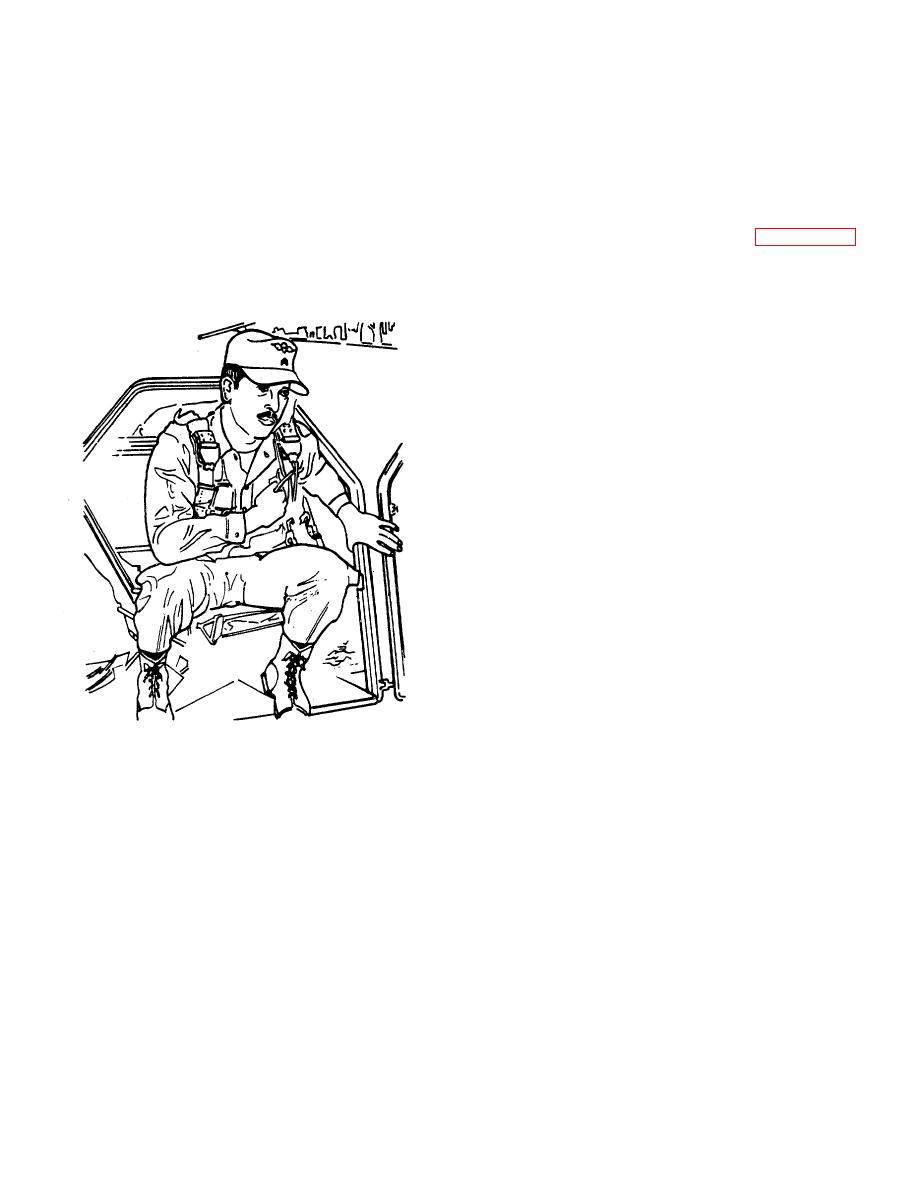
TM 10-1670-213-10
(d) Position the feet in such a manner that
the balls of the feet extend over the door edge.
(b) Release the seat and move the
seat to the rear.
(e) Attain a crouch position and look
straight out of the aircraft toward the horizon.
(c)
Repeat
procedures
in
paragraph (1)(b) through (f) above.
WARNING
b. U-1A (Otter). Bailout procedures used on the
U-1A aircraft shall be in accordance with paragraph 2-7a,
After exiting the aircraft look down at
except for the pilot. After all other personnel have
the ripcord and make sure you have
departed the aircraft through a cabin door, the pilot will
grasped the ripcord.
proceed as follows:
(1) Disconnect the seat belt, shoulder
harness, and helmet intercom cord.
(2) Move the seat down and to the rear.
(3) Insure parachute harness leg and chest
straps are connected and tight, with webbing loose ends
stowed in the applicable sliding web keeper.
(4) Turn to the left and place the left foot on
the fixed step below the cockpit door.
(5) Position the opposite foot on the door
edge and the, hands on each side of the door opening.
(6) Jump straight out and push vigorously
with both hands to insure clearing the wing strut. After
clearing the aircraft, bring the right hand up across the
chest, grasp the ripcord, pull out and downward. Discard
the ripcord grip and attached cable.
c. O-1A and TO-1A (Birddog). The O-1A and
TO-1A aircraft are designed for occupancy of a pilot and
an observer only. Under in-flight emergency conditions,
the observer shall be the first to bailout after the entrance
door, located on the forward right side of the aircraft, has
Figure 2-10. Door Position for 8ailout From the U-6A.
been jettisoned Procedures to be used by the aircraft
Typical.
occupants are as follows: (1) Observer.
(f) Exit the aircraft by jumping
(a) Disconnect and remove the seat belt,
straight out using the left hand to push away from the
shoulder harness, and helmet intercom cord, if applicable.
aircraft. After clearing the aircraft, pull the ripcord out and
downward. Discard the ripcord grip and attached cable.
(b) Insure the parachute harness leg and
chest straps are connected and tight. Further insure all
(2) Personnel occupying the pilot and co-pilot
webbing loose ends are stowed in the applicable sliding
positions will prepare to evacuate the aircraft through a
web keeper.
cabin door after all other personnel have departed the
aircraft as follows:
(c) After the pilot slides his seat forward,
pass to the right of the pilot and move into the open door.
(a) Disconnect the seat belt, shoulder
harness and helmet intercom cord.
2-11

